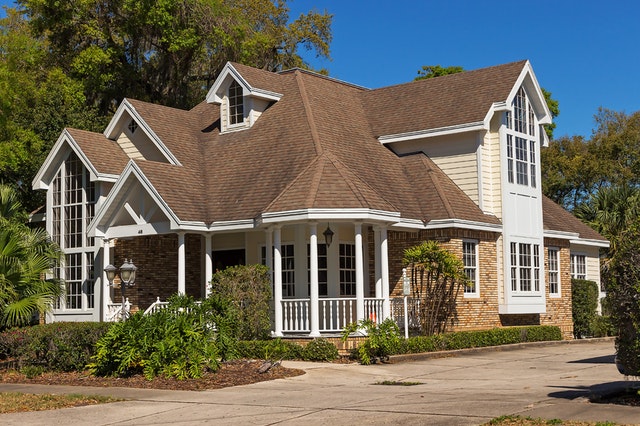
6 Steps to Find The Best Place to Rent

We all have a dream home. Mine is a two-story single-family home with an open floor plan and a big backyard—perfect for hosting summertime barbecues with the family. And I’m sure you’ve imagined what your ideal home is, too.
However, we need to consider realistic factors when deciding where and what kind of house to rent. For example, how much of a budget can you set aside for housing? How big of a space do you need? What are the amenities and features that you can’t forego?
Finding the ideal place to rent can be stressful and time-consuming. But with these six easy steps, you can start your search for the best place to rent today.
How to Find Your Ideal Rental Home
You don’t have to follow these steps in strict, chronological order. You can do them simultaneously or jump back and forth from one to another. Think of these steps as “best practices” to help you find your next rental home.
1. Determine Your Budget
Start by creating a budget to determine how much you can afford for housing. Here’s an online budget program used to qualify for a mortgage, so it’s pretty thorough! If you need additional guidance in running the numbers, services like GoSimplifi, Mint, and HelloWallet can help you manage your finances.
The rule of thumb is to try to stay to a rent amount that isn’t more than 30-35% of your monthly income. The lower it is, the better your chances of paying rent on time and in full. On top of this, you still have to consider the following costs:
1. Utilities (unless the landlord pays for them)
2. Security deposit (often equal to one month’s rent)
3. Possible move-in fees (typically a range of $300 to $500)
4. Additional “living” costs (parking, cable, internet, storage, furnishing, and laundry
5. “Pet rent” (where the cost will depend on the animal type and size and can either be a one-time or monthly payment)
The bottom line is to ensure that you set a realistic budget before looking for your next home. This will keep you from struggling to pay rent and amassing debt. Homes that are beyond your financial capability are a problem—not a dream!
2. Consider Roommates
If you want to live in an expensive neighborhood (perhaps due to your place of employment or schooling), consider getting roommates to split the cost.
Websites such as Padmapper and Roomi allow you to create an account, post a listing, and connect with potential roommates easily. Padmapper is more map-based and can help you search in specific locations, while Roomi screens all their listings before posting to weed out the scams.
Once you’ve found a potential roommate, conduct your own “tenant screening” to confirm their capability and commitment to pay rent and maintain the rental. Be sure to do a proper screening even if they’re your friend, so you can protect both your home and relationships from unnecessary complications.
On top of the usual questions like their length of stay, here are additional questions to ask them:
1. What are your cleaning habits?
2. What is your workday routine?
3. What do you usually do on the weekends? Will you have friends come over?
4. Do you smoke or drink? If so, how often?
5. Do you have any pets? If so, what kind are they, and how do you take care of them?
6. What are the challenges you’ve faced in past living situations?
7. How do you plan to pay rent each month?
Also, consider asking for separate leases instead of a joint lease from your landlord, so you’re only responsible for your portion of the rent. Having separate leases means you won’t be responsible for any rent your roommate misses.
3. List the Features You Want
Beyond the number of bedrooms and bathrooms, brainstorm the specific home features that you want and need. You can split them into two lists: “nice-to-have” features and the non-negotiables.
Here are some questions to help you:
1. What kind of lifestyle do you want? What features would help you achieve it? Remember to be realistic in balancing the lifestyle you want versus the lifestyle you currently have.
2. Who are the people living with you? What specifications would they need to have? If you’re a young couple looking to start a family, consider whether you’ll need an extra bedroom or two.
3. Will you set up a work-from-home space? What work-conducive factors do you need? If you’re living alone, maybe converting the second bedroom of a two-bedroom unit can be your home office.
By determining the essential features against those you can do without, you’ll give yourself an easier time making smarter decisions when sorting through your options.
4. Choose Your Housing Type
Pick the type of home you want, depending on your budget and your non-negotiable home features. Here are some common housing types to get you started:
Apartments: These buildings often sit in the central area of dense neighborhoods and cater to many other tenants. The smaller space of each unit and the location of the building make it ideal for single young professionals looking to live and work in urban areas. They are also typically run by property management companies, which means you’ll have more help maintaining your unit.
Townhouses: These homes give you more privacy than most apartments. Townhouses are a type of terraced housing that often comes with a small yard or patio. They have more square footage than an apartment, which is usually spread out across multiple floors. These homes are ideal for smaller families but not for elderlies who cannot handle climbing up flights of stairs daily.
Single-family homes (SFH): If you have a larger family and want more privacy, single-family homes will be your housing type of choice. These homes have a larger yard, higher room count, and fuller kitchens and bathrooms. However, the overall cost to live in single-family homes is much higher than apartments or townhouses.
By choosing a preferred rental type, you’ll easily narrow down your search on listing sites. Searching by rental type already filters a large amount of data from the get-go.
5. Conduct an Online Search
As you look for your ideal rental, you will realize that there are countless places for you to find listings in. With the overwhelming number of websites available, where should you start?
Visit the neighborhood virtually: We suggest that you start with a website that gives you an overview of the neighborhood. Niche is a great place to see the average rent, average income of the job opportunities, list of schools nearby, and general livability of the area. You can also check Areavibes and NeighborhoodScout for more information.
Check current listings: Once you’ve chosen where you want to live, do in-depth research on the current listings in the area. Check out Zillow or Hotpads to see what’s available in the neighborhood, as well as some nearby options to consider. You’ll see the estimated rent they’ll charge, features of the rental property, and the contact details of whoever listed it.
As you conduct online research, you must filter the options with your budget, non-negotiable home features, and preferred rental type in mind. You might need to go back to the earlier steps to adjust your budget and requirements should you see that the kind of rental you want costs more than expected.
6. Watch out for Scams!
Lastly, don’t fall for any scams! There are, unfortunately, a lot of crooks with deceptive listings out there. Usually, they copy a valid rental ad but dramatically lower the price to be enticing. These scams will often trick you into paying different kinds of fees before disappearing completely. You need to be aware of the common signs such as:
1. They refuse to meet you in person.
2. They tell you to ignore other ads because they just fired that company.
3. They want you to move in without seeing the property.
4. They want you to pay rent or the security deposit in cash before you’ve seen the property.
The general rule of thumb is that if the listing is too good to be true—it’s probably not good at all.
Conclusion
Finding the best place to rent is a highly personal process. While an apartment unit downtown will be perfect for one person, it might lack necessary features for another. A single-family home would be perfect for a family but way too expensive for a single young professional.
Instead, go through these steps to determine the rental that best fits your lifestyle and needs:
1. Determine your budget and consider getting roommates.
2. List down the home features you need versus those you can do without.
3. Choose the rental type that will best fit your lifestyle and budget.
4. Conduct online research on neighborhood livability and current listings.
5. Don’t be fooled by any scams!
We hope this article helps you narrow down the options available in the market and puts you in the right direction towards finding the rental home of your dreams.
Image by Pixabay